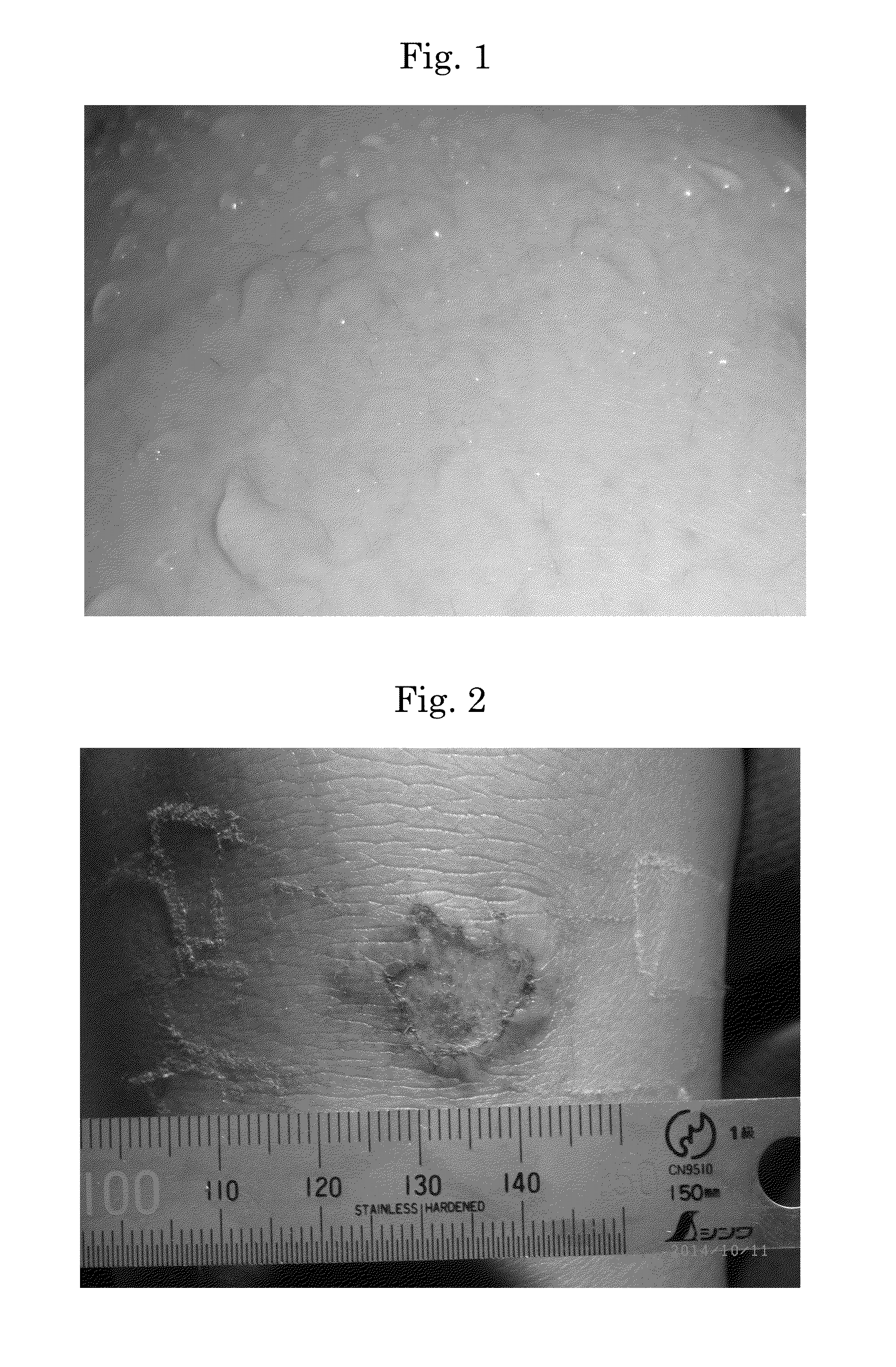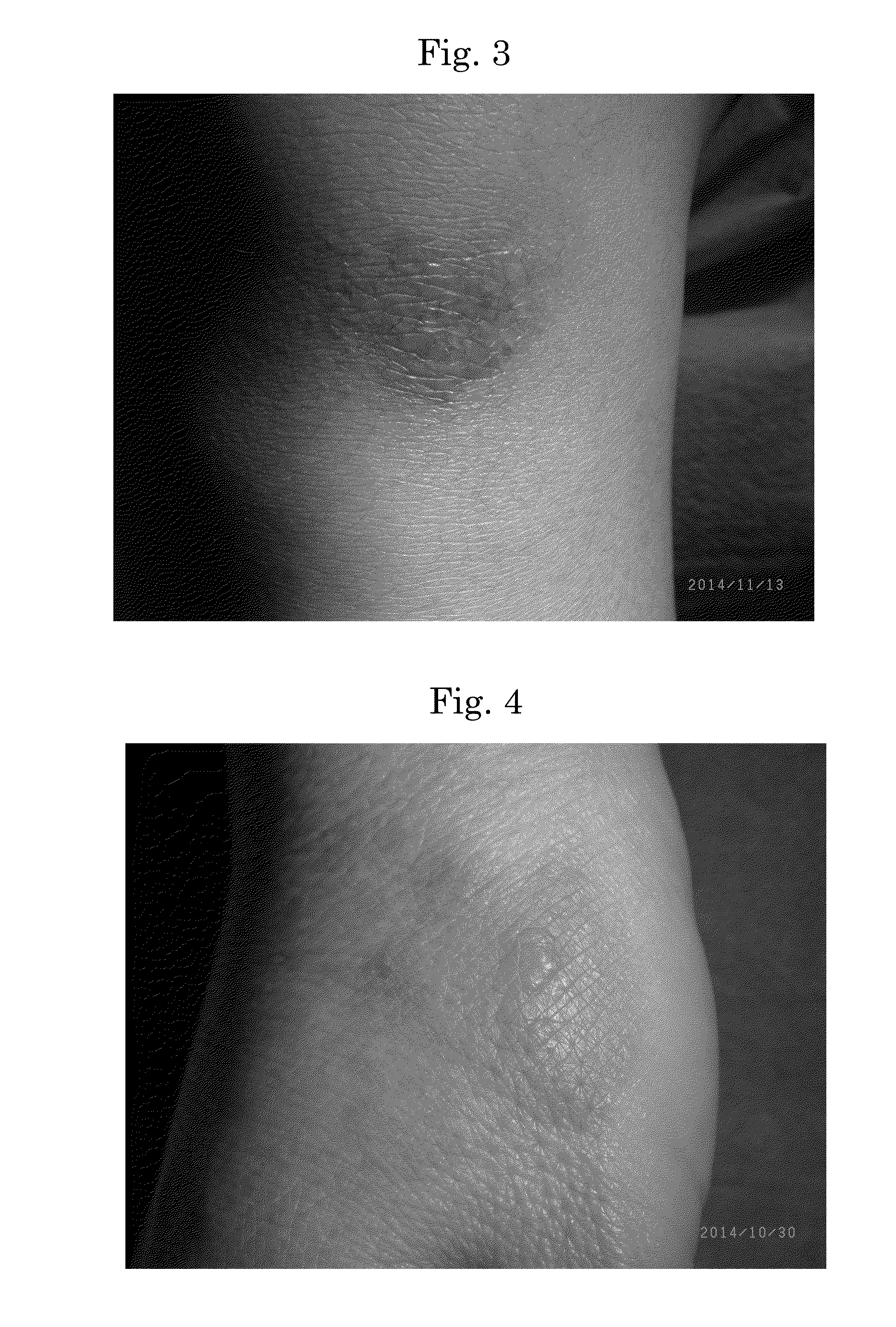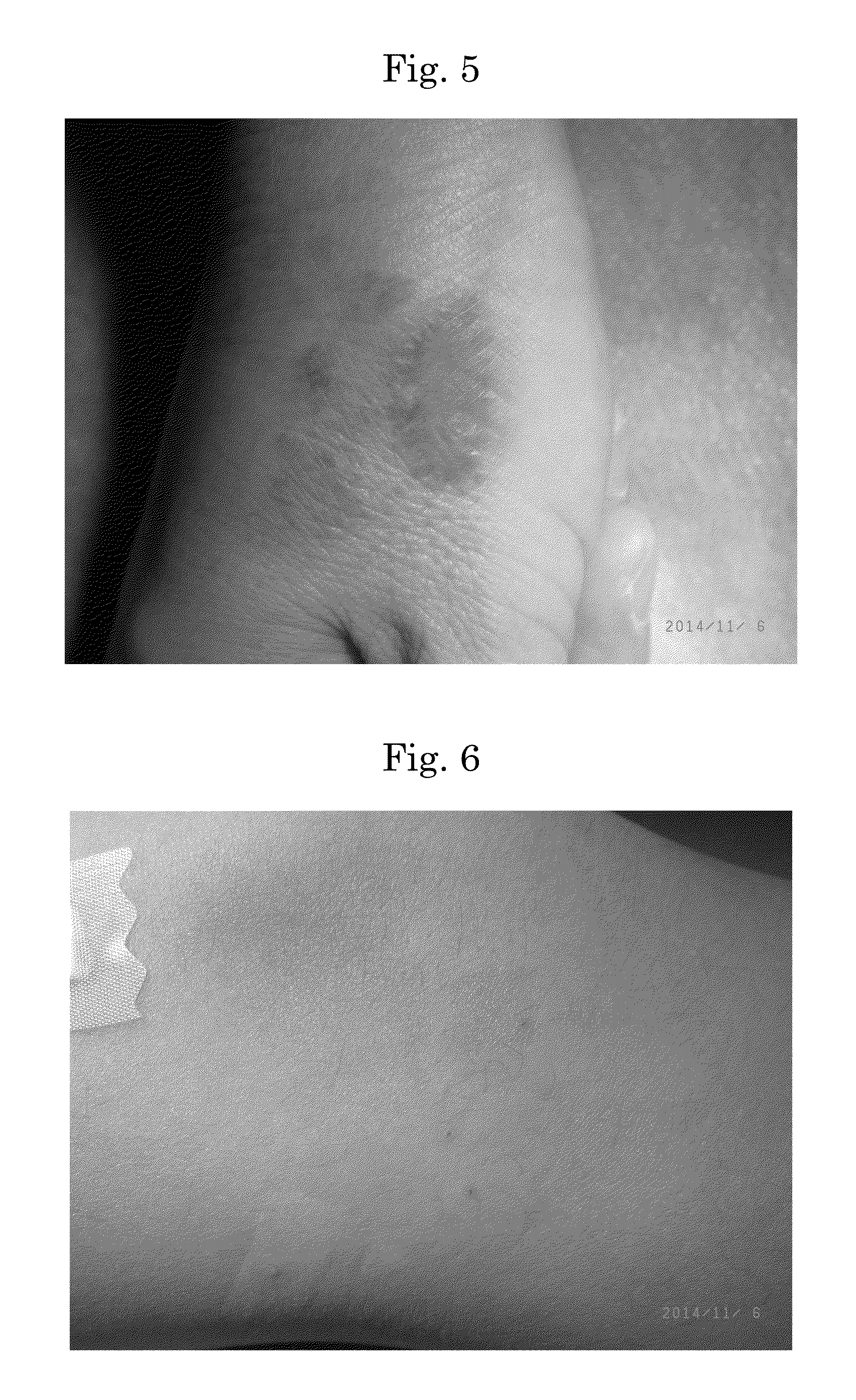Biological film-forming agent for facilitation of wound healing and coating and protection of biological organs
a bio-film and wound healing technology, applied in the direction of biocide, bandages, drug compositions, etc., can solve the problems of inability to use any conventional dressing, high amount of inflammatory exudate, and strong pain associated with use, so as to achieve the effect of increasing lubrication, suppressing fibrin production, and suppressing inflammation reaction and immunoreaction
- Summary
- Abstract
- Description
- Claims
- Application Information
AI Technical Summary
Benefits of technology
Problems solved by technology
Method used
Image
Examples
example 1
[0048]To 500 ml of purified water, base components 1 and 2 were dissolved followed by the addition of 3, 4, 5 and 6 and the mixture was stirred.
1. Aluminium chloride hexahydrate45.50 g 2. β-Cyclodextrin6.50 g3. Xanthan gum1.50 g4. Glycerol20.0 g5. Propylene glycol20.0 g6. 10% sodium hydroxide solution15.0 g7. 70% ethanol preparation 9.0 g
[0049]In the present Example, in order to reduce irritating nature at affected areas due to the acidity of aluminium chloride, 3.0% of the 10% sodium hydroxide solution was added to neutralise, the produced precipitate was removed by filtration and pH was adjusted to 3.9. The resulting solution did not have any action as a bactericidal agent and had fungus growth after a 1-week storage at a normal temperature to form colonies like spherical moss. Therefore, the 70% ethanol preparation was added as a fungicide.
case 1 of example 1
[0050]Use example to knee abrasion: An abrasion with the maximum size of 15 mm×15 mm in a 10-year-old boy. The boy had repeatedly fallen to scratch the same site over 3 years, and thus the outside of the wound surface showed the formation of an elevated hypertrophic scar.
[0051]FIG. 2 is an observation of formation of a water-repellent defatting film which exhibiting haemostasis action immediately after directly applying an aqueous solution according to Example 1 of the present invention without disinfection. Formation of a film immediately after applying Example 1 after the injury and visit: With the consent of mother of the patient, the patient received 10 mL of Example 1 and applied Example 1 once daily after taking a bath with exchange of gauze. The patient made another visit after 33 days (FIG. 3). As shown in FIG. 3, although it was a secondary site of a hypertrophic scar with repetitive bending and stretching, the scar was not elevated, already lost redness or stiffness and wa...
case 2 of example 1
[0052]Use example to a dorsum of a right hand with a 2nd degree burn: A 55-year-old woman who touched a lid of a pan to be affected on a dorsum of her right hand by a 2nd degree burn (superficial) (FIG. 4). The patient applied Example 1 once daily with exchange of gauze. The patient made another visit after one week (FIG. 5). Formation of epidermis was completed at a site with blister formation and almost no pigmentation after inflammation was observed. Generally, completion of epidermalisation in a 2nd degree burn requires 14 days or more, a blister tends to be ruptured, blister roof tends to be adhered to gauze during exchange of gauze, erosion may occur, healing may be protracted and a hypertrophic scar may occur; however, in this case, a clean epidermalisation was observed after 7 days of injury (FIG. 5). At the time of injury (at the first visit) (FIG. 4) and at a second visit (7 days after injury) (FIG. 5).
PUM
| Property | Measurement | Unit |
|---|---|---|
| Percent by mass | aaaaa | aaaaa |
| Fraction | aaaaa | aaaaa |
| Concentration | aaaaa | aaaaa |
Abstract
Description
Claims
Application Information
 Login to View More
Login to View More - R&D
- Intellectual Property
- Life Sciences
- Materials
- Tech Scout
- Unparalleled Data Quality
- Higher Quality Content
- 60% Fewer Hallucinations
Browse by: Latest US Patents, China's latest patents, Technical Efficacy Thesaurus, Application Domain, Technology Topic, Popular Technical Reports.
© 2025 PatSnap. All rights reserved.Legal|Privacy policy|Modern Slavery Act Transparency Statement|Sitemap|About US| Contact US: help@patsnap.com



